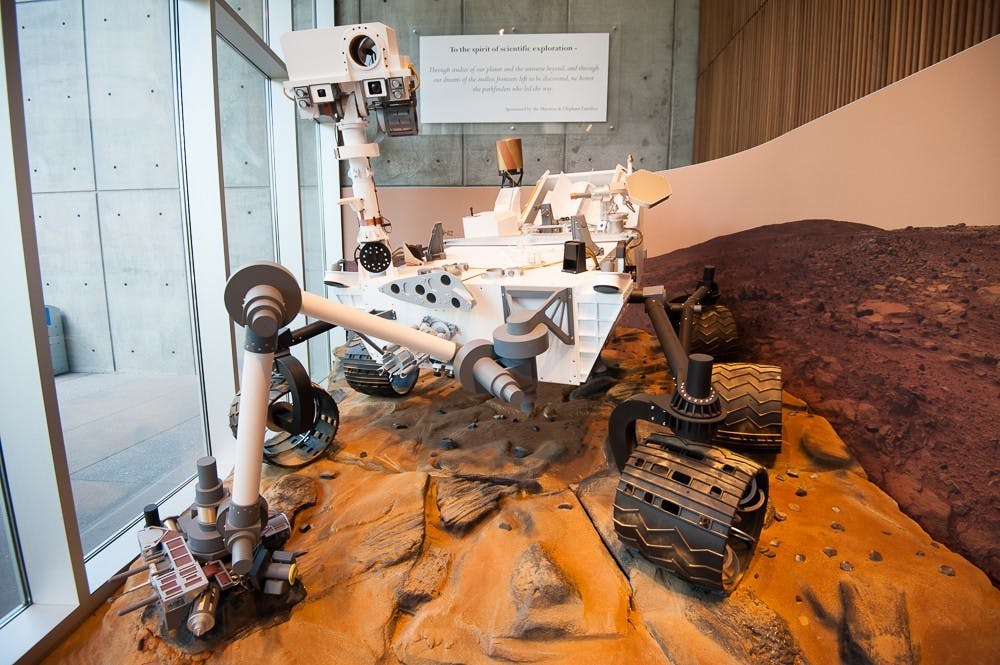Recent discoveries made by the ASU-led team behind the Curiosity rover suggest that in order to further investigate Mars, humans may soon need to join their robotic companions in space.
When looking for locations to study on Mars, points of interest include sites where water may have existed in the past. It was narrowed down to Gale Crater, which was the target site of study for the Curiosity rover.
Sean Czarnecki is an ASU graduate student studying geological sciences and one of the authors on the original research paper.
"One of the primary goals of the Curiosity rover mission has been to identify habitable environments in the past or present in Gale Crater," said Czarnecki.
The team behind the Curiosity rover has identified one such past environment, in the form of underground fractures containing opal.
"Given the importance that these fracture halo networks have for understanding the duration of habitable environments and the potential preservation of life, they make ideal targets for future exploration." said Czarnecki.
Allyson Trussell and Ben Douglass are both students working with Jim Bell, an ASU professor with involvement in the Curiosity rover mission. Trussell is a graduate student studying planetary geology with a focus on the mineralogy of Mars, while Douglass is a Ph.D. student studying cratering in icy surfaces and exoplanets.
"It gives us a reason to keep exploring Mars, and to go back and to maybe even send humans there one day to look for life," said Trussell.
"The time we think we're going to get to Mars keeps getting pushed back. Right now we're probably aiming for the mid to late 2030s," Douglass said. "I'm kind of hoping that's when we start introducing human exploration."
Curiosity uses several instruments to harvest data from Mars' surface. DAN, Dynamic Albedo of Neutrons, and Mastcam-Z, a series of cameras acting as the eyes of the rover, are just two of the instruments the Mars Science Laboratory, uses to gather information.
"DAN is essentially a neutron spectrometer, and neutron spectrometers can be used to detect water because when neutrons interact with water, hydrogen molecules tend to slow down the neutrons and cause the neutrons to lose energy. So when we get a reading from that, we can tell if there is water present," Trussell said.
Liquid water on Mars was found in 2022, but now, the data that DAN collects can be used for even deeper discoveries. Mastcam-Z is a series of cameras acting as the eyes of Curiosity, only these eyes can see a much larger spectrum of light than human ones.
"What is really cool about the Mastcam is that it can take spectra of minerals and rocks and cover visible to near-infrared wavelengths. From this spectra, we can deduce some of the mineralogy and composition of the rocks on Mars," Trussell said.
Finding opal on Mars gives scientists reasons to explore the possibility of life on the planet and even the possibility of sustaining human life as well.
"Opal requires groundwater to form in these fracture halos, and opal is known to preserve traces of microbial life on Earth," said Czarnecki. "As discussed in the paper, opal-rich fracture halo networks are a potential ISRU (in-situ resource utilization) reservoir that astronauts could use for water as well as oxygen and fuel."
This would allow astronauts to use the fracture networks on Mars as a natural resource when they explore the planet. Previously, exploration to Mars has been thought of as an "if", but since finding microbial traces would be a massive step in better understanding space, the cost of space travel is becoming more and more justified.
"In the future, it would be cool if we could do sample overturn with that unit, because if there are microbes, we could bring it back to Earth and study it in a laboratory and see if there is life," Trussell said.
Edited by Annie Graziano, Reagan Priest and Anusha Natarajan.
Reach the reporter at brenna.gauchat@gmail.com and follow @brenngauchat on Twitter.
Like The State Press on Facebook and follow @statepress on Twitter.




